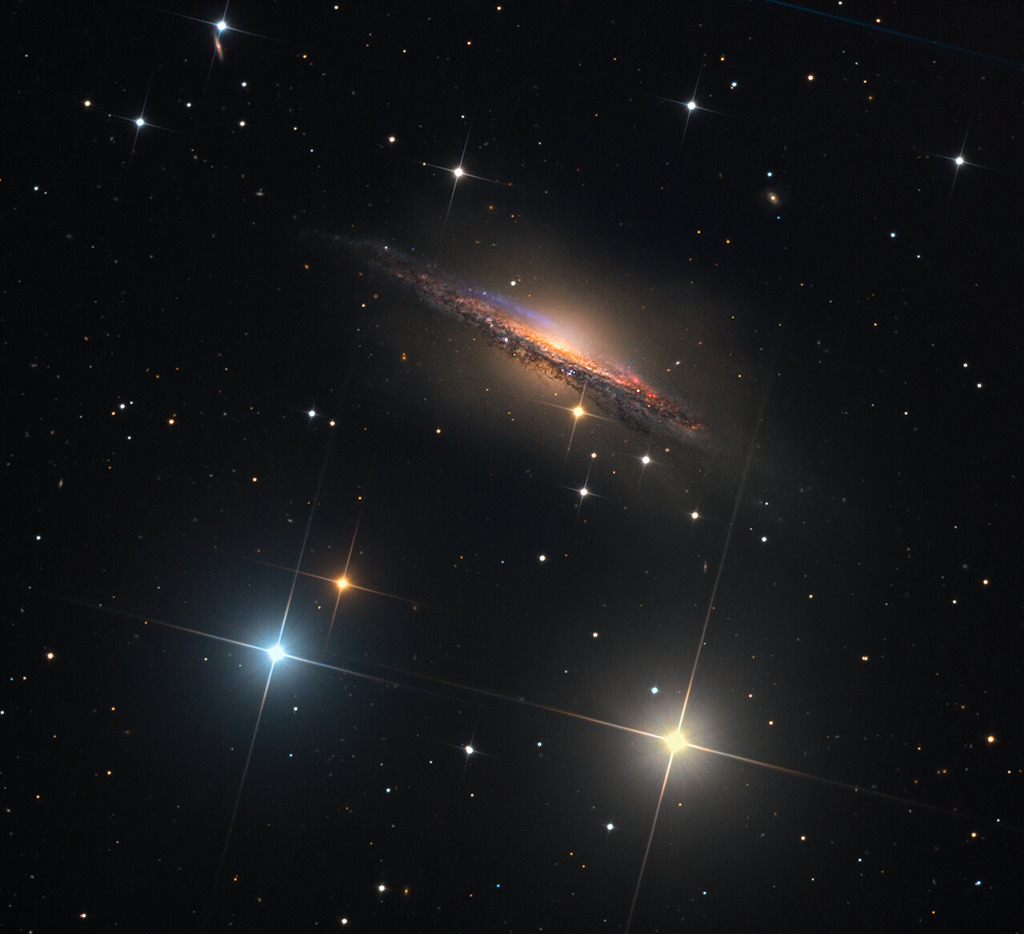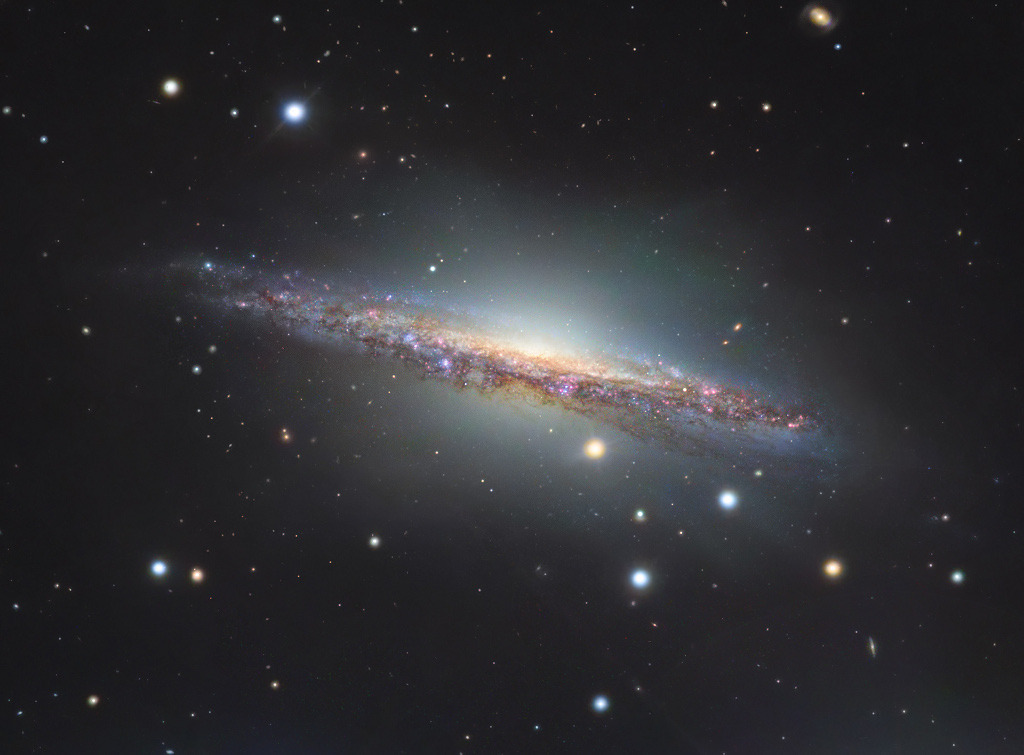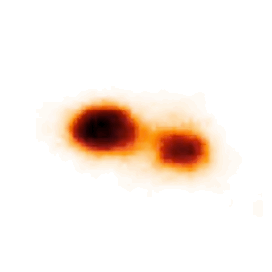NGC 1055 is a large edge-on galaxy, presumably larger than the Milky Way. I find its halo quite interesting.
APOD Robot wrote:
With a smattering of even more distant background galaxies, the deep image also reveals a boxy halo that extends far above and below the central bluge and disk of NGC 1055. The halo itself is laced with faint, narrow structures, and could represent the mixed and spread out debris from a satellite galaxy disrupted by the larger spiral some 10 billion years ago.
There is of course a spelling mistake here - it should be "bulge" instead of "bluge". But as the caption said, the halo of NGC 1055 is boxy and laced with narrow structures. Don't ask me how anyone would know that these structures are debris from a collision that happened 10 billion years ago!


NGC 1055 is located close to well-known galaxy M77. Wikipedia wrote about NGC 1055 and M77:
Wikipedia wrote:
It is a binary system together with the bright spiral galaxy M77 (NGC 1068). These two are the largest galaxies of a small galaxy group that also includes NGC 1073, and five other small irregular galaxies.
The separation between M77 and NGC 1055 is considerably smaller than the separation between the Milky Way and Andromeda (which is about two million light-years):
Wikipedia wrote:
Based on the published red shift, (Hubble Constant of 62 km/s per Mpc) a rough distance estimate for NGC 1055 is 52 million light-years, with a diameter of about 115,800 light-years. The separation between NGC 1055 and M77 is about 442,000 light-years.
Wow. So if we are supposed to be heading for a giant smash-up with Andromeda, you have to wonder about the fireworks that will accompany the trainwreck of NGC 1055 and M77!




Wikipedia wrote:
NGC 1055 is a bright infrared and radio source, particularly in the wavelength for warm carbon monoxide. Astronomers believe that this results from unusually active star formation.
Interesting. There are no visual signs of any unusually active star formation in NGC 1055. The galaxy is rather red in color, although not remarkably so (not nearly as red as Andromeda!), and the visible star clusters and emission nebulas are relatively small.
Admittedly NGC 1055 is bright in the far infrared, about two magnitudes brighter in the far infrared than in B light, which is (often, but perhaps not absolutely always) a sign of star formation. We may compare NGC 1055 with (mostly red and almost dead) Andromeda, which is one magnitude
fainter in far infrared light than in B light!
It could be, of course, that there is a huge amount of star formation in the center of NGC 1055, where we can't see it behind all the dust. And the boxy halo could be a a remnant of outflows from the center as a result of star formation there. But the halo of NGC 1055 is nothing compared with the halo of M82!
Now I'm off to celebrate Christmas, because it's Christmas Eve, which is the big day of Christmas here in Scandinavia!


Ann
 Portrait of NGC 1055
Portrait of NGC 1055







